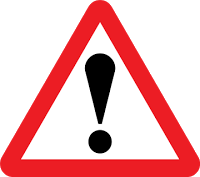Creating a patient-friendly environment will go a long way towards establishing a healthy partnership with your patients, which will lead to better health outcomes.
Your clinic staff can play an important role in ensuring your clinic is “health literate.” They are the face of your clinic, as well as your eyes and your ears, and they spend far more time with your patients than you do. They can encourage (or discourage) patients from speaking up, and can significantly influence the overall experience a patient has with your clinic. Non-medical staff can help ensure that simple and routine communication — such as appointment slips, when to call about a test result, and filling in consent forms — are clear, easily understood and followed up on. In addition to ensuring that all staff exhibit an attitude of helpfulness towards all patients, make sure they listen respectfully to your patients. Clinic staff members are busy and have lots to do, but they should not assume patients understand everything perfectly right away. Your patients are the most important people in your clinic and they should all be treated as VIPs !
Friendly, personal interaction is the key. Appointments should be scheduled by people, not by answering machines. From the receptionist to the nurse, everyone should speak clearly to patients, and avoid using long words when possible. Friendly staff can be a major asset; and if they see you treating your patients with care and consideration, they will mirror your behaviour and attitude. Because they are lay people themselves, they are much more likely to be able to understand what the patient goes through and can be invaluable in keeping your patients happy!
If your patients need help in filling out forms, make sure this assistance is easily available. Ensure that forms are not too complicated or crowded and only collect essential information. Provide your patients with a private area in which to complete them, so the patient doesn’t have to discuss personal issues in the waiting area.
If you need to refer your patients to specialists, pathology laboratories or imaging centres for further tests, simply providing them with a card and telling them to call a phone number for an appointment may not be enough. Making such calls can be intimidating to patients with limited literacy skills. Help your patients make the call, and explain to them what they need to do once they get there. Include a simple map to the location, and ensure that test requisition forms are attached to the appointment slip, so they don’t get lost.
The key to patient engagement lies in building health literacy at the level of the family doctor and ensuring that physicians help patients to help themselves.The consultation is the primary bedrock of clinical medicine, and each consultation is a learning opportunity for both doctor and patient which in turn builds up ‘learning capital’ which has both individual and community benefits.Both patient and doctor benefit by learning from each other. Encouraging patients to take more control when they are ill is also an effective tool for improving public health. Paternalistic styles of practice tend to create unhealthy dependency and undermine self-reliance. Promoting involvement and a sense of ownership of their health care could be the best way to ensure that people adopt healthier lifestyles.
“Patients are at the heart of the health service of the future. The principle of patient and user involvement has become ever more important and the health service has moved beyond an ‘informed consent’ to an ‘informed choice’ approach.” (Wanless Report, 2002).
How adults learn
Every appointment is an opportunity for teaching and learning , both for the patient as well as for the doctor. However, given today’s real life constraints, is expecting doctors to teach patients asking for the moon? Doctors are in a hurry. They must rush through most encounters with patients; and the average physician listens to a patient for fewer than 22 seconds before interrupting. Patients also contribute to the problem. They “don’t ask, don’t tell”, and often keep silent when they should speak up. If they have trouble understanding their medication instructions, they may not say so, because they are ashamed of their illiteracy.
The trick is to think of your patients as adult learners and there are four principles of adult learning you need to remember.
• Adults need to feel respected in order for learning to take place
• They need to want to learn
• They learn best by active performance
• They need feedback regarding their progress
Your first question should not be “What do I want my patient to know?” but “What do I want my patient to be able to do?” Information on its own is sterile – it needs to be put into action to become valuable. Adult learning is self-directed learning, where learners own the learning process and determine their own needs, goals, and priorities – you simply serve as a guide.
When communicating health information to your patients, remember a few principles about how adults learn best:
Health topics should address current needs and interests. Rather than give a general overview of a particular health topic, make the message personally relevant and useful . If this is tailored to the patient’s needs, and is based on what the patient needs to do to get well, he is far more likely to remember it. You need to start from where your patients are.
• Information should be practical and should relate to everyday occurrences. For example, if you want your patient to eat or drink certain foods, be specific and relate them to the patient’s usual shopping trip and mealtimes. If you want them to perform certain exercises, ask about their daily schedule and how they might fit these exercises in.
• Use context. Adults learn better when new information is related to things they already understand. If you want them to take a new medication in the morning, for example, suggest that they take it when they brush their teeth. Providing concrete suggestions will help them to understand your advice.
• Allow patients to direct the conversation Ask the patient what issues they would like to discuss, rather than unilaterally presenting what you want them to know. Use open-ended questions such as “What questions do you have?” rather than simple yes-no questions like, “Do you have any questions?” which are too easy to simply say, “No” to in response. Encourage patients to ask questions, and listen carefully. This is not easy for most doctors to do, so you will have to practice. However, it’s very useful to do this – you will learn a lot if you allow your patients to teach you.
• Use “teach-back”. One of the most effective ways to ensure your patients have understood what you have told them is to request them to teach the information back to you after you have explained it. It can be very useful to ask the patient to repeat your advice (using their own words) to the person accompanying them. This repetition helps them to retain the information. You will be surprised how easy it is for patients to misinterpret something, even though you think you have done a masterly job of explaining it. This is why there’s no point in asking – ‘Do you understand?’ because they will always say ‘Yes’, and you don’t know what they have understood. Instead, try saying, ‘ When you go back home, what are you going to tell your husband about today’s visit?’
• Use graphics. A picture is worth a thousand words, especially for illiterate patients. You don’t have to be an artist – even simple line drawings can help get a complex idea across. Provide alternatives to written text when possible –anatomic models can be extremely helpful. Combining audio, visual, and experiential learning is an excellent way to facilitate understanding. Encourage patients to view additional resources during their visit – many are happy to learn more about their health while they are in your clinic. You can play patient educational DVDs on your TV screen which they can watch while they are waiting for you, or they can view Medline Plus Interactive Health Tutorials online, which offer explanations of health conditions in an easy-to-use, multimedia format at http://www.nlm.nih.gov/medlineplus/tutorial.html.
• Create a website. While you may not have enough time to spend with each patient face to face, if you create educational materials and publish these on your website, your patients can then review them from home at their leisure. You don’t even have to actually create materials – you can simply provide links to other websites that provide reliable information.
• Tell stories to make it personal. If you tell your patient what happened to someone with a problem similar to his, he will remember this very vividly. It’s helpful to use a bit of imagination when crafting your stories, to make them even more memorable.
• Use metaphors. Metaphors help frame an idea in a familiar context. For example, you could use plumbing as a metaphor for the digestive system, or the concept of car maintenance for the importance of regular health screenings.
Using plain language
Most people, regardless of literacy level, prefer the use of simple, plain language when it comes to health information. Patients with limited literacy have a hard time understanding written materials because they cannot understand a text by just glancing at it. They cannot skim and are forced to decipher the meaning of each word, one word at a time. This is hard work, because they literally have to plough through each line of text, word-for-word & line-by-line. This takes them a lot of time and concentration and they often get stuck at long multi-syllabic words. They are forced to skip large blocks of text when these are too complicated, and they get lost and confused very easily. If you want to better understand what a patient with poor literacy has to deal with, try reading a page written in a foreign language – or try making sense of the fine print in a legal document.
Physicians must become bilingual, not in the sense of being able to speak another language, but being able to use words that patients can understand. Using words like bleeding instead of hemorrhage, swelling for edema, heart attack for myocardial infarction, and cancer for carcinoma goes a long way to improving patient understanding. The entire medical team – nurses, medical assistants, and receptionists – can play key roles in helping patients gain greater understanding if you train them to use plain language – just tell them to imagine that they are talking to their elderly grandmother who is hard of hearing !
Patients must do their part as well and I ask my patients to do their homework before coming to their appointments, ready “to teach and to learn.” The Ask Me 3 program will help you to help your patients. Teach your patients to always ask these three questions each time they talk to a doctor, nurse, or pharmacist:
• What is my main problem?
• What do I need to do?
• Why is it important for me to do this?
If we want to help our patients, we need to create materials that are easy for them to understand. This is where plain language comes in – plain language is simply communication your audience can understand the first time they read or hear it. Remember George Orwell’s advise :
• Never use a long word where a short one will do.
• If it is possible to cut a word out, always cut it out.
• Never use a foreign phrase, a scientific word, or a jargon word if you can think of an everyday English equivalent.
Plain language is easy for patients to read, but you have to work hard in order to write simply ! As Nathaniel Hawthorne said, “Easy reading is damn hard writing.” It’s worth noting that plain language is NOT about dumbing things down. It’s a way of speaking and writing that helps people:
• Find what they need
• Understand what they find, and
• Use what they find.
Plain language is friendly and conversational.
Emphasise important points first .
Use an active, personal voice (e.g., use “you should” rather than “one should”).
Use short sentences and common, everyday words, instead of medical jargon.
Sometimes, doctors try to impress their patients with their erudition, by using long and complex terms. You may actually end up scaring your patients away, because they may feel that if you cannot take the trouble to explain things properly, you will not be able to provide good medical care.
Conversational language is a far better way to encourage a dialogue, because your patients will be more likely to remain silent and hide the fact they do not understand what you are saying if you use words they are not familiar with. Some examples of preferred plain language for common medical terms are:
Analgesic = pain killer
Contraception = birth control
Hypertension = high blood pressure
Lipids = fats in the blood
Monitor = keep an eye on
Oral = by mouth
Lots of doctors give their patients educational handouts and brochures and feel they have done their job as far as educating their patient goes. The problem with this approach is that the written word is not interactive. It cannot:
• Answer questions when the patient asks them
• Provide alternate ways of explaining things
• Always be understood by the reader if the reading level is too high
While creating suitable patient educational materials in plain language is an important step in the right direction, it is not enough. It is important for your staff to create a “blame-free” environment in which patients with low health literacy skill levels can seek help without feeling ashamed or stigmatized. Please do not blame patients with limited literacy for their lifestyle and health practices. Low literacy limits opportunities and resources, and reduces the control they have over their lives. They do not have the luxury of being able to make informed choices about their own lifestyle. They feel powerless and helpless – and they often are. Please don’t wash your hands off their problems or treat them as second-class citizens -they need your help and kindness much more than other patients do, simply because they are vulnerable and lost. If you treat them with respect, your staff will also do so.
Most doctors feel they have excellent bed side manners and communicate well with their patients , so they do not need to worry about these fundamentals ! However, as George Bernard Shaw pointed out, “The main problem with communication is the assumption that it has occurred.”
HELP is organizing a conference on “ Putting Patients First Through Health Literacy “. This will be on Sunday, 2nd December’12 at Nehru Center at 10.30a.m. to 1.p.m. The website is www.patientpower.in/2012
The conference will be followed by a health literacy workshop in the afternoon. Helen Osborne, President, Health Literacy, a world renowned Consultant from US , will be delivering the keynote and conducting the workshop. Her website is at www.healthliteracy.com
At this time, we will be releasing the book, Deciphering Medical Gobbledygook: Promoting Health Literacy to Put Patients First , authored by Dr Aniruddha Malpani and Juliette Siegfried. This is Chapter 4 from that book







